Asustor AS6204T Braswell NAS Review
by Ganesh T S on November 5, 2015 8:00 AM ESTMulti-Client NFS Performance for Professional Workloads
We looked at the multi-client performance of CIFS shares for professional workloads in the previous section. In a similar manner, we also evaluated the multi-client NFS performance of the Asustor AS6204T. Instead of the Windows 7 VMs, we used CentOS 7 VMs. The network configuration remained the same. The NFS share exported on the NAS was mounted with the following options.
<NAS_IP>:/PATH_TO_NFS_SHARE /PATH_TO_LOCAL_MOUNT_FOLDER nfs rw,relatime,vers=3,rsize=32768,wsize=32768,namlen=255,hard,proto=tcp,timeo=600,retrans=2, sec=sys,mountaddr <NAS_IP>,mountvers=3,mountproto=udp,local_lock=none,addr=<NAS_IP> 0 0
Using a popular filer benchmarking program, we did played back the same multi-client real-world professional workload access traces used in the previous section. Similar to the strategy for the CIFS performance evaluation, failing to meet the required op rate criteria at a particular load point made us stop the testing a couple of load points down the road. NFS shares on the Asustor AS6204T with four 7200 RPM hard drives in RAID-5 can support, at any given point of time, recording of 10 or more video streams, or, up to 4 software builds, or, up to 3 virtual desktops. However, it can't support any database operations.
Database Operations
The Database Operations workload was a challenge to get up and running on a NFS share in the AS6204T. This workload makes extensive use of server-side NFS locking. Asustor's currently available firmware doesn't support NFS server locks (lockd). Upon providing an error report, they got back to me with a beta firmware integrating NFS server lock support. It enabled the workload trace to replay properly, but, unfortunately, the op rate seems to be limited by the software rather than the disk IOPS. The detailed metrics from our trace playback are available here
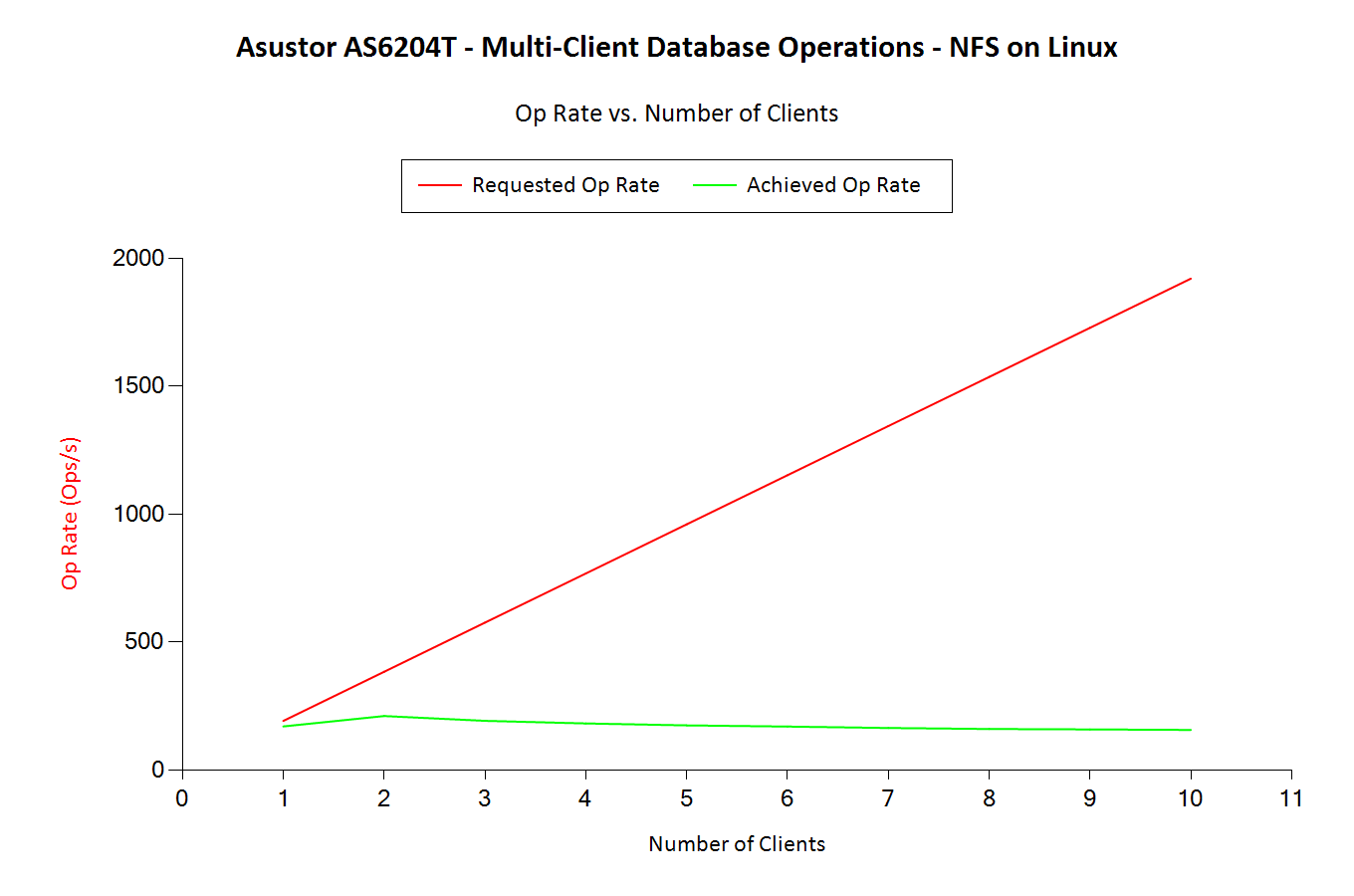
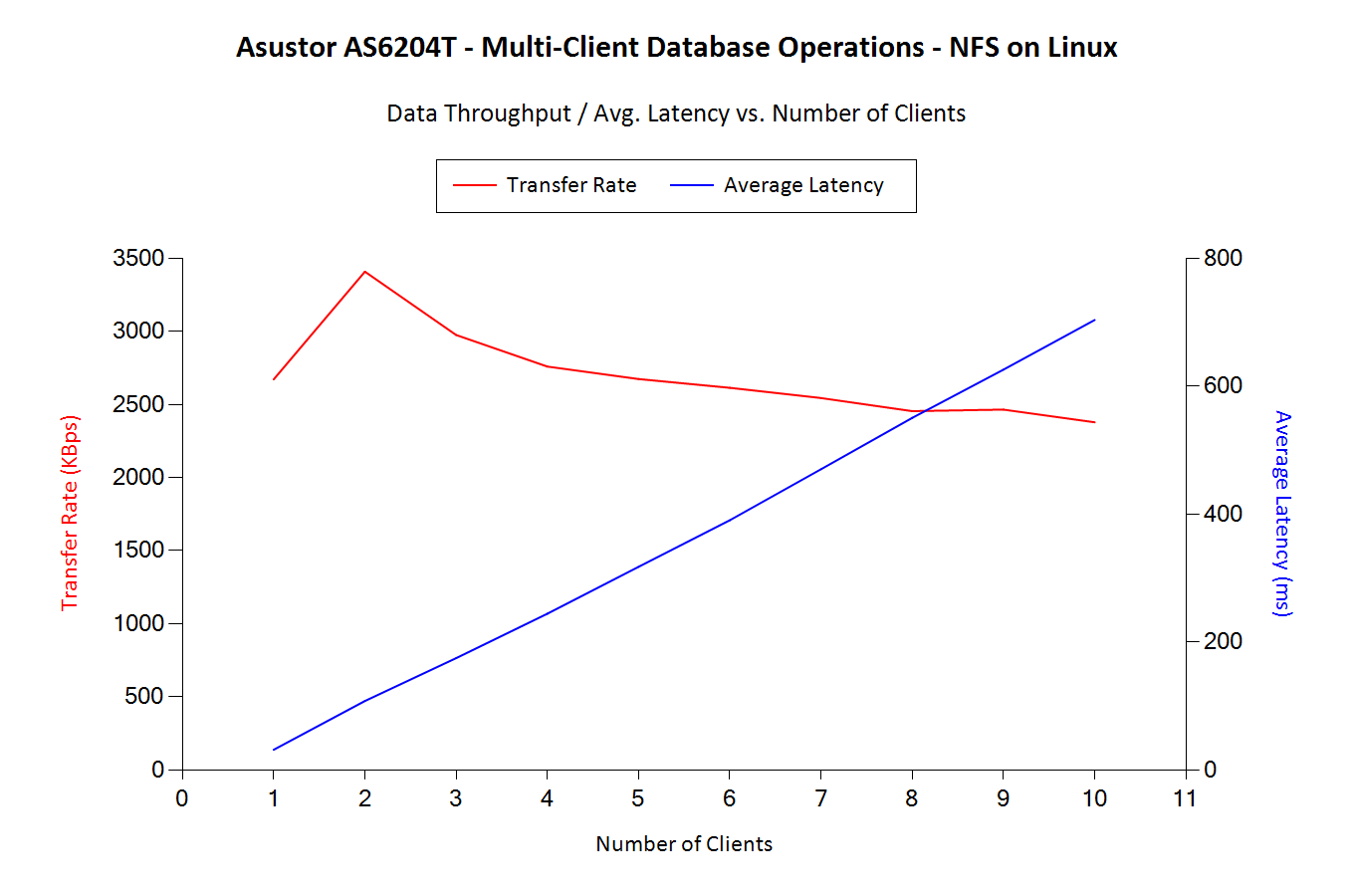
Software Builds
The Software Builds workload seems to get acceptable performance for up to four clients.The detailed metrics from our trace playback are available here
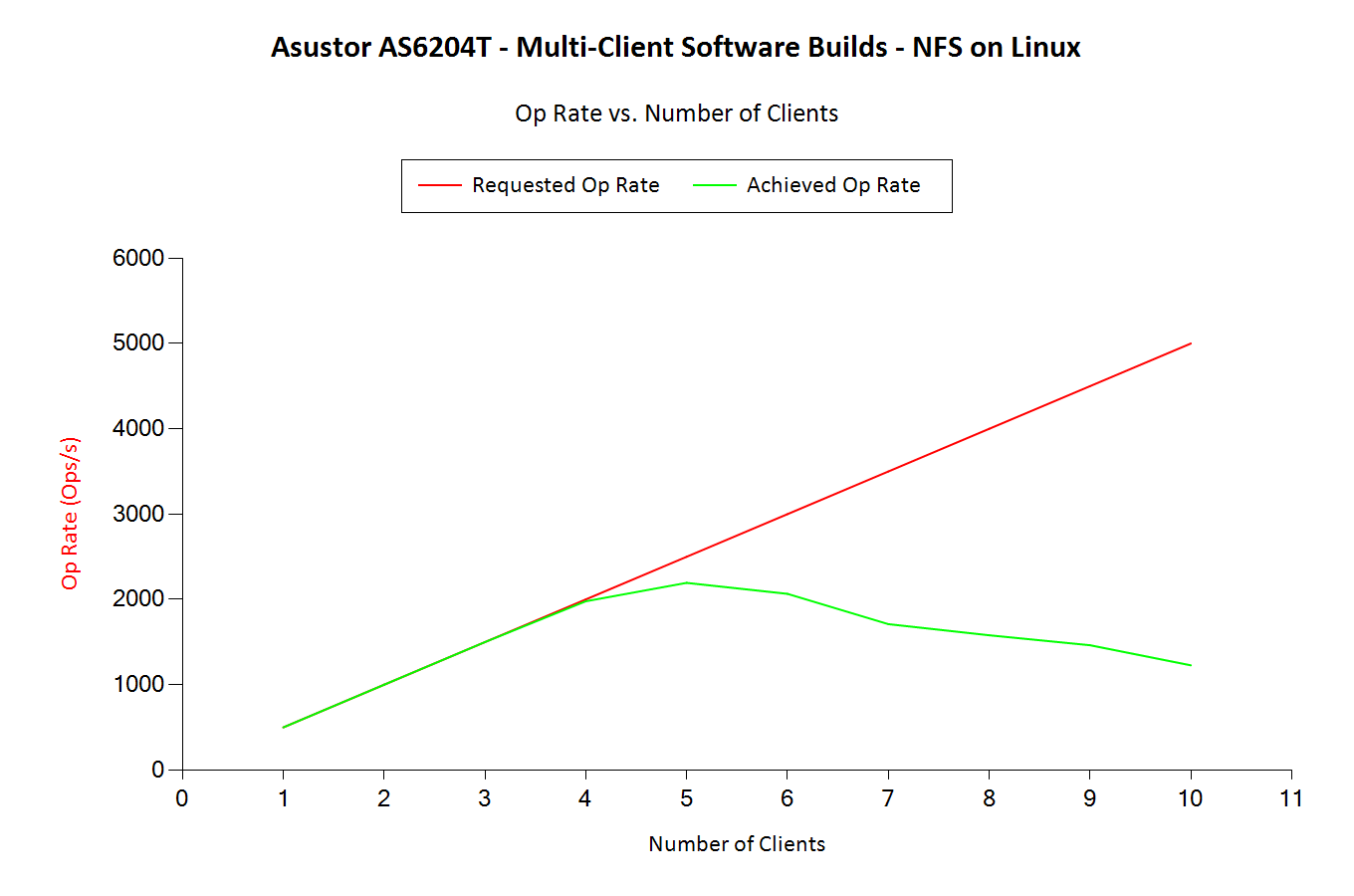
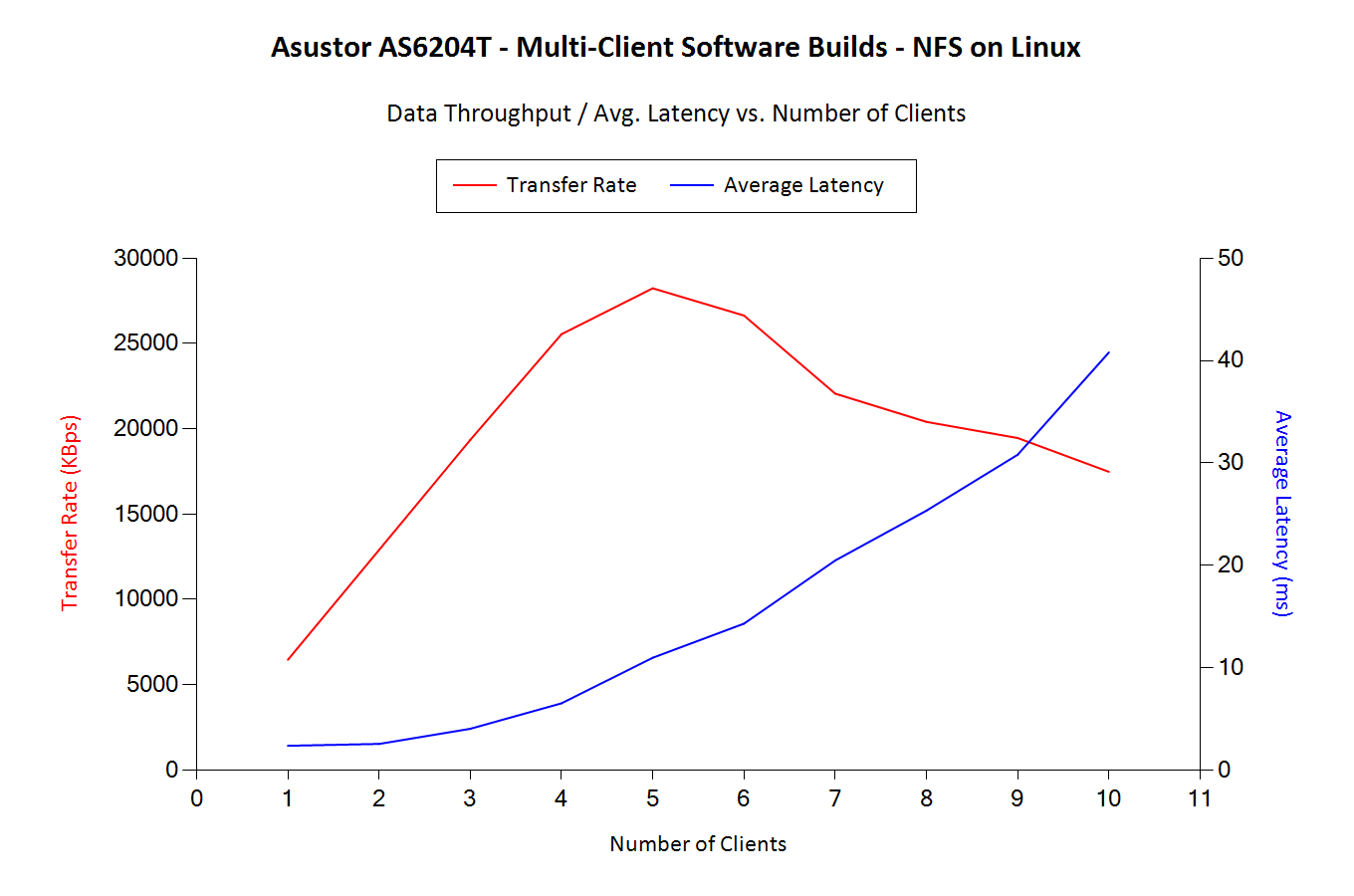
Video Recording
The Video Recording workload seems to get acceptable performance for more than 10 clients.The detailed metrics from our trace playback are available here
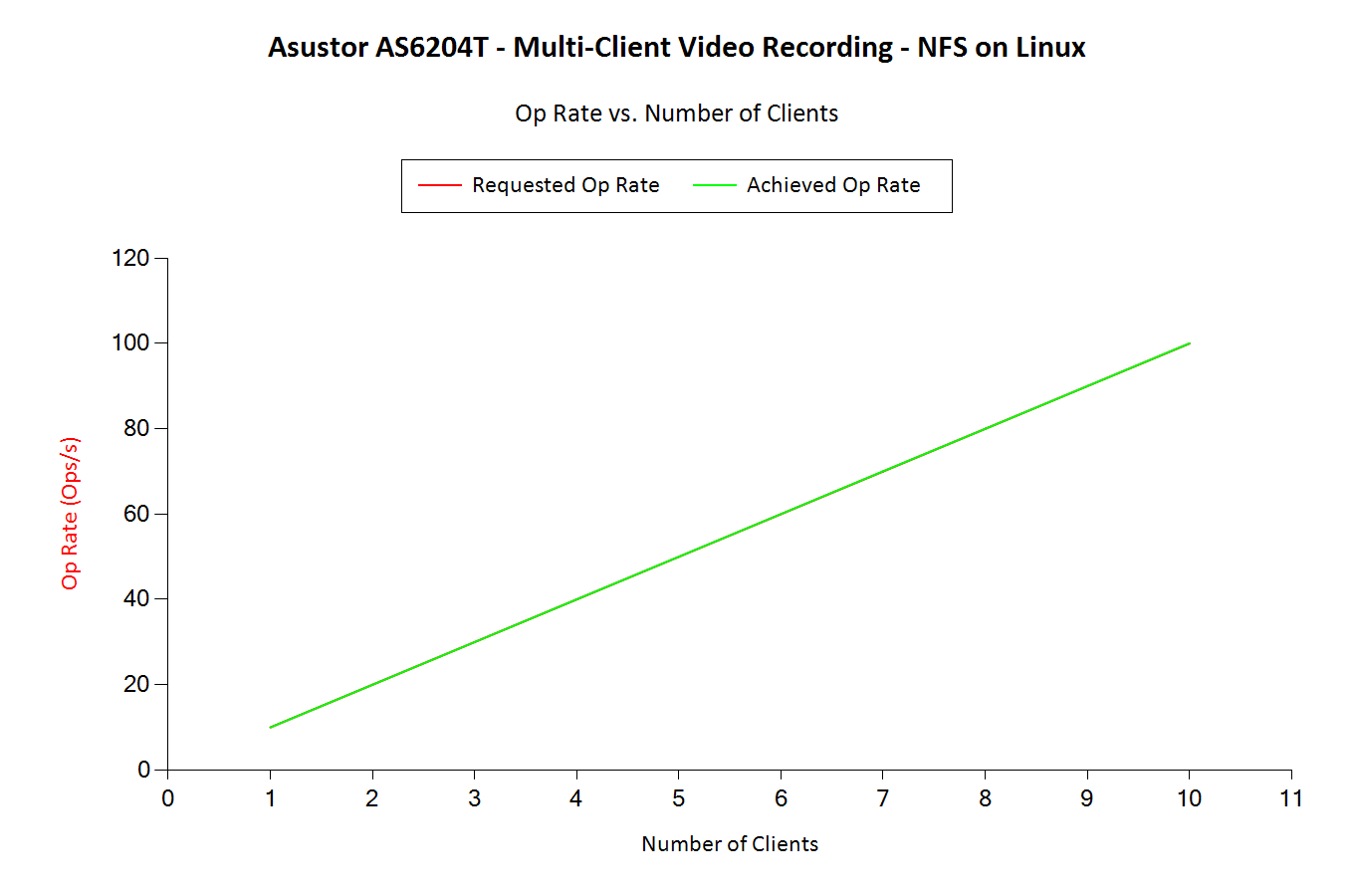
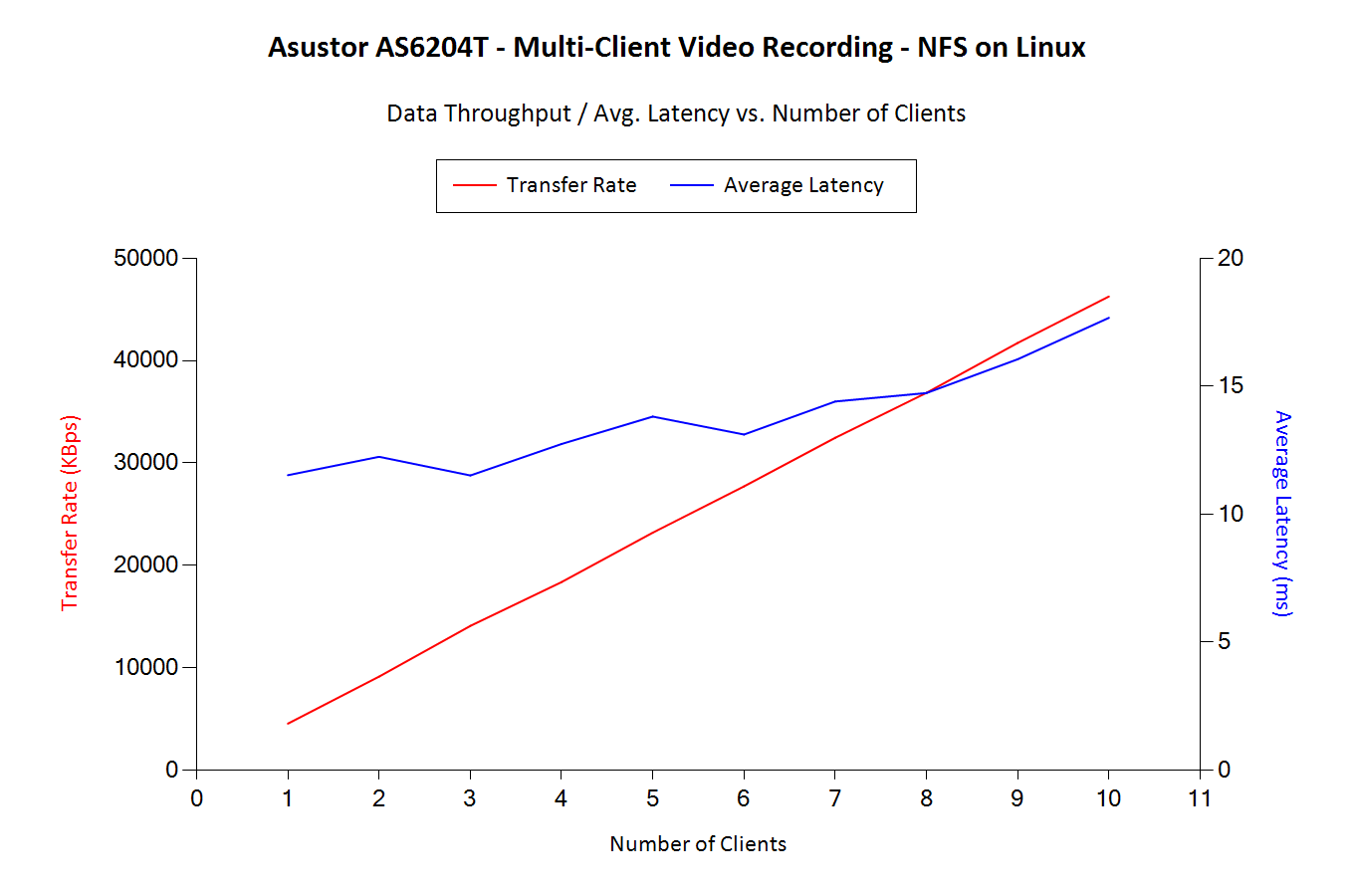
Virtual Desktops
The Virtual Desktops workload seems to get acceptable performance for up to three clients.The detailed metrics from our trace playback are available here
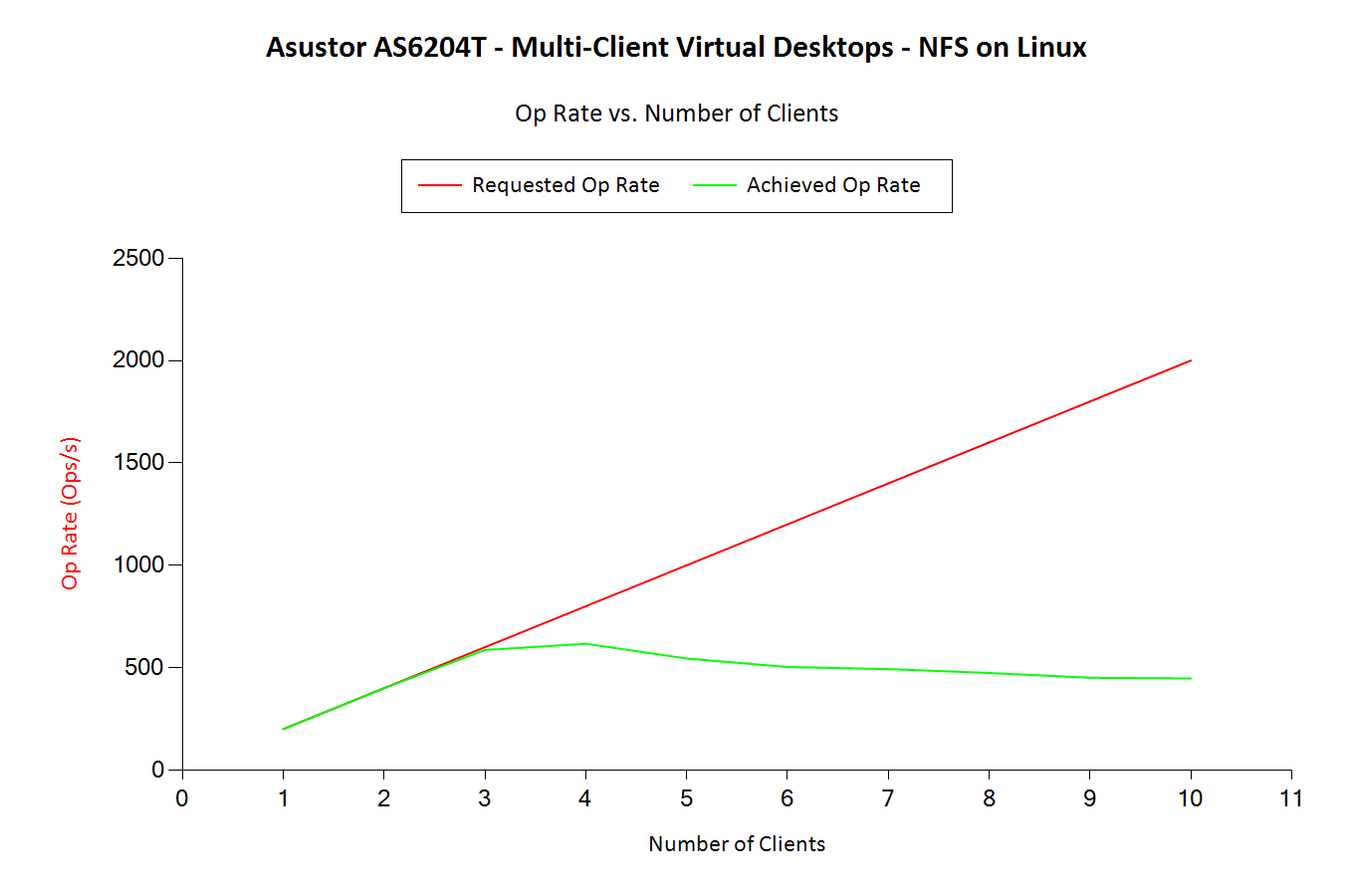











29 Comments
View All Comments
Der2 - Thursday, November 5, 2015 - link
Nas life.zeeBomb - Thursday, November 5, 2015 - link
I have heard a lot about these surverlliance stations for quite some time now...appears to be the next big thing. Thank YOU for delivering these results!asendra - Thursday, November 5, 2015 - link
I'm hoping Sinology releases in 2016 a 4bay braswell NAS, a DS416+ if you will, hopefully with a N3700. They have already announced some 2016 models with braswell, just not the ones I want.I would buy the current DS415+, but because I'm in no need of one right now, I just hope they get to it before I need to make the purchase.
galfert - Thursday, November 5, 2015 - link
I think the DS716+ is the device to get this year. No need to wait for a DS416+. If you need more than two drives you can get the 5 bay expansion model for the DS716+. That is why it is called a DS7xx+ model...because you can have 7 drives. So it is better than a DS4xx model which can't support the expansion module.For me the DS716+ is the device I've been waiting for. Powerful Intel CPU, Expandable RAM, Expansion module support, Transcoding of video, virtualization support, Hardware Encryption support. It has everything I need. Previously you had to compromize. I have a DS214play and a DS713+ and the DS716+ can replace both of them.
asendra - Friday, November 6, 2015 - link
You know, I hadn't considered that option. It would be a more expensive one, but it could work, in fact I could use a dx213 instead, wich gives me plenty storage for my needs.If when I need to buy one this next year they haven't released yet the new 4bay braswell ones, I might go with this option instead of the older ds415+.
Another thing I wanted to wait for so I could see how it develops It's Btrfs support.
DanNeely - Thursday, November 5, 2015 - link
Is the rebuild time graph showing numbers in seconds? Hours would be a lot more immediately meaningful. /3600 isn't a particularly easy mental computation.romrunning - Thursday, November 5, 2015 - link
Your article says: "Their Braswell lineup consists of four models, with each model name following the pattern AS6X0YT, where X (1 or 2) refers to the number of cores in the Braswell SoC in the model and Y (2 or 4) refers to the number of bays."Yet the Asustor AS6204T has 4 cores. So by your definition, it should have been named the "AS6404T".
So it sounds like your definition should be updated.
romrunning - Thursday, November 5, 2015 - link
Forget the above - the wording isn't as clear. I thought you were saying it was a direct relationship where the number = amount of cores. It could have been written that the second numeral denotes whether the CPU is dual-core (X=1) or quad-core (X=2).romrunning - Thursday, November 5, 2015 - link
This also reminds me - with today's advanced CMS/commenting systems, why can't we edit or delete our own comments on Anandtech??DanNeely - Thursday, November 5, 2015 - link
Which editor/reviewer do you want to furlough to hire a web developer to replace the comment system?